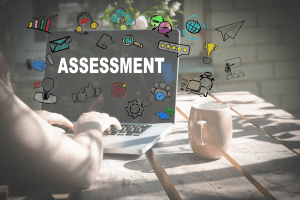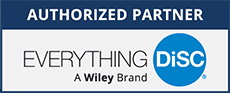Corexcel has focused on workplace trends for years, but we’ve never seen anything like this. The pandemic has brought about a workplace shift that’s becoming as widespread as the virus itself. Last spring, businesses, and organizations scrambled to establish work-from-home arrangements for employees. Now, nearly a year later, businesses throughout the U.S. are embracing hybrid work style and fully remote work options.
For a change of pace, we’re sharing our own work experience as it might serve as a useful example for other businesses.
Our Hybrid Experience
At Corexcel we went fully remote in 2020, and we recently transitioned to a hybrid work arrangement. We’re still ironing out the kinks, but for now, our team is working remotely on Mondays and Fridays and in the office on Tuesdays, Wednesdays, and Thursdays. So far, we’re finding the three-days-in-the-office-two-days-at-home arrangement to be a good balance.

We decided to try a hybrid format to:
- Provide flexibility for employees
- Reduce our rent expense
- Lower the company’s carbon footprint
Before going hybrid, we polled the Corexcel team and, interestingly, no staff members indicated a preference to work virtually every day. While that might not be the response at every business, we’re finding that our team members aren’t missing a beat. In fact, our employees are comfortable and working effectively with the new arrangement.
We asked why they like the hybrid arrangement and received these comments, among others:
- “It’s nice to skip the commute sometimes after being on the go with the kids.”
- “I can work more at my own pace.”
- “I appreciate the mix. I get quality time with the kids, but I also get time in the office with no kids and no dog.”
- “Hybrid is so flexible. We can start a project in the office and finish the work at home at night if that works best with our schedule.”
These benefits would resonate with employees at other organizations as well.
Why Hybrid Instead of Fully Virtual?
As we see how our hybrid work arrangement plays out, we might decide to go virtual; who knows. For now, we like coming in part of the week to get a sense of normalcy. Our time in the office works well for meetings, too. Employees who might be hesitant to speak during a Zoom call are often open to speaking at an in-person meeting. For us, the hybrid model seems to be the perfect mix.
A Trend That’s Here to Stay
From our own experience, though brief, as well as input from other businesses, we believe a hybrid workplace could be the wave of the future. We’re hearing that business owners feel hybrid work styles widen the hiring pool. Candidates who might find the commute too much on a daily basis based on their location might be willing to travel two or three days a week. In addition, if a hybrid structure makes employees happy, they’re going to be loyal to the company. Hybrid workplaces could lead to less employee turnover, and in turn lower costs.
Going Hybrid?
If you’re going hybrid, there are several factors to consider. SHRM’s article, “What to Consider When Moving to a Hybrid Work Model,” is a good place to start. If you’re concerned about hiring when your team isn’t in the office full-time, we recommend using a hiring assessment tool to screen candidates. PXT Select™ lets you assess candidates on thinking style, behavioral style, and interests—from wherever they are. If you’re thinking of going hybrid, please let us know!
Email us at learn@corexcel.com to learn more.

 Consultants, human resources specialists, and internal corporate trainers interested in facilitating Everything DiSC Workplace® workshops: We get it. The
Consultants, human resources specialists, and internal corporate trainers interested in facilitating Everything DiSC Workplace® workshops: We get it. The 
